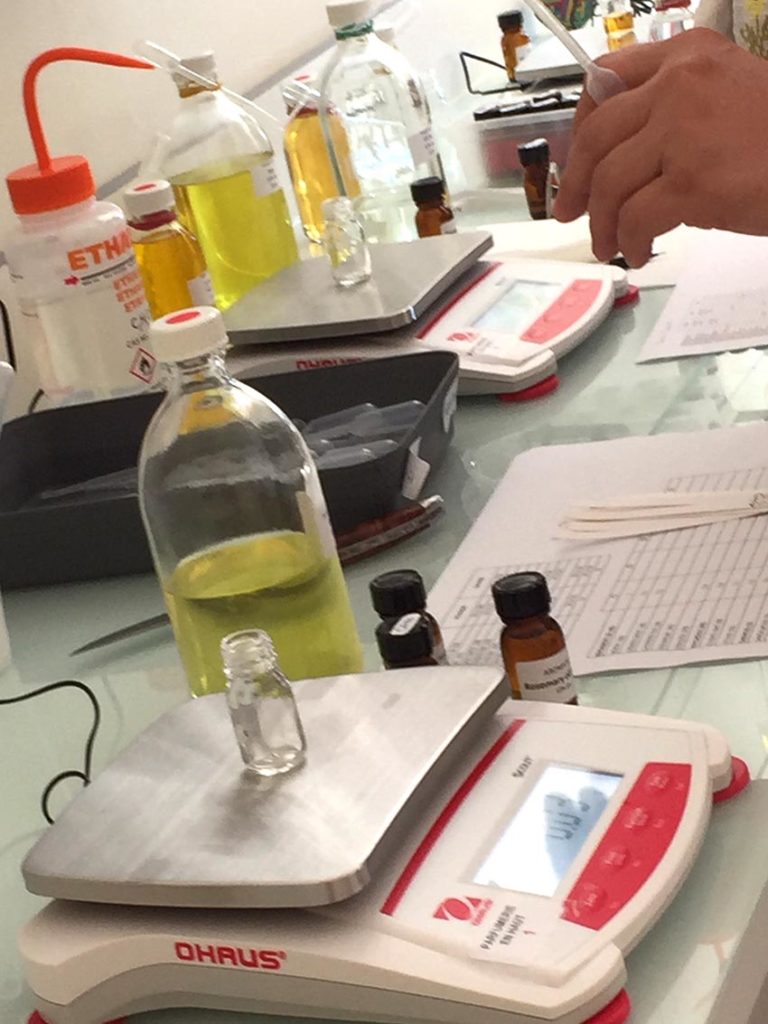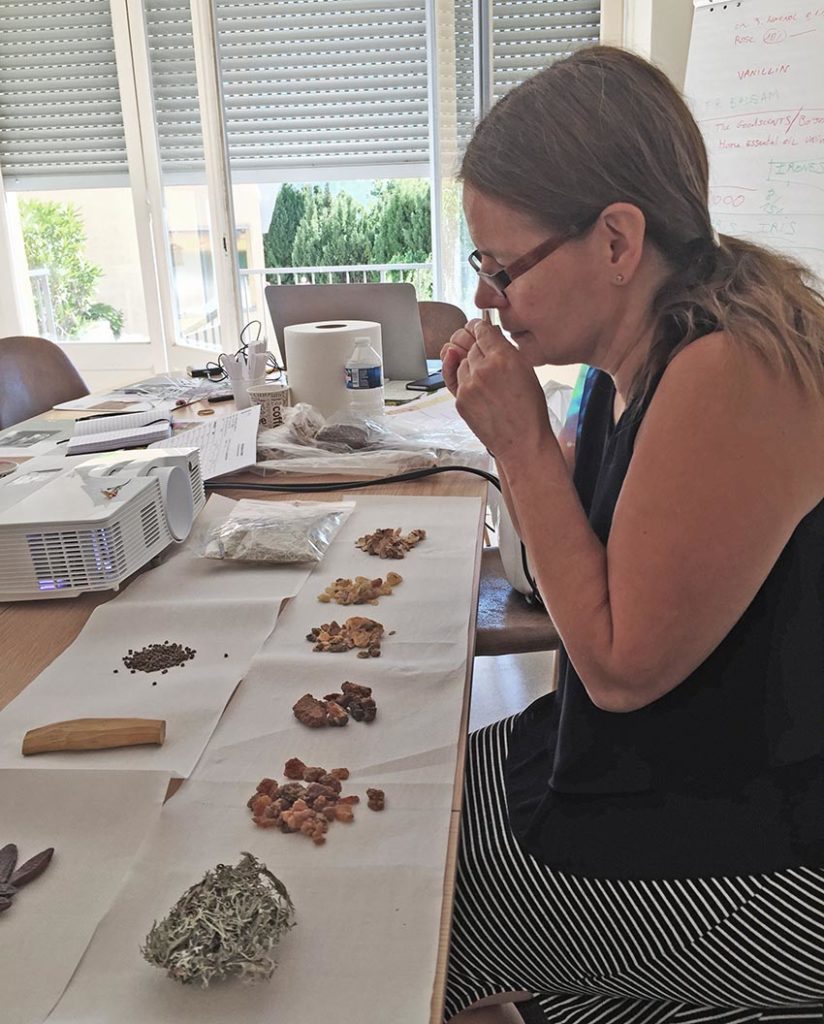Posted by ANA.
I woke up at 6:30 am and showered and prepared my breakfast and my school bag with my perfume, mists and oil samples to show the instructor that I was going to meet today.
I went walking to the school, due to not being sure whether I would need a special pass to open the gate at school and park there, so I went walking and my calculations were 40 minutes walk to the school.
I arrived just on time, but did not know where my class was in the building.
I entered what I thought was the main entrance and happened to see a classroom, but it was a completely different class and inquired in English where my class might have been, they just said “beside, probably in the basement”. That was pretty vague and thought it was a complete different building next to this building, but found just residential accommodation and went back to ask again whether someone could guide me. A nice guy came to show me and glad for him to do this, as I would not have any clue where to go.

When I came, the class just started and all my classmates were there.
The Instructor, Elisabeth Proal, is a chemist who has worked for Givaudan and Chanel (25 years). She also worked in the Research Centre. She does research in active ingredients for cosmetics. Nowadays, she works as a consultant for different companies, she works in EU Legislation. She is teaching about aromateurs for GIP (Grasse Institute of Perfumery).
I learned that the rose from Grasse famous for the perfume production is ‘Rose Centifolia’ (meaning One Hundred petals in Latin). The smell of this rose I experienced yesterday, when visited the growers and gatherers for distillation, is very fresh, has many facets and tonalities in its aroma, it has a very floral aroma and very rosy one too.

We learned about the NATURAL RAW MATERIALS:
- Essential Oils (requires distillation)
- Concrete (requires extraction. It is solid or a butter like material; the wax that remains from this material when is diluted to produce an absolute; this wax is used in Cosmetics)
- Absolute (requires extraction and it is the diluted version of Concrete with solvent that at the end of the process evaporates and leaves a viscous liquid solution)
We learned of the Origin of NATURAL RAW MATERIALS:
- PLANT
- ANIMAL
METHODS OF EXTRACTION:
- Combustion using Smoke
- Distillation
- Serpentine Distillation (Steam)
- Extract with Solvent
- CO2 Extract or also known as ‘Critical Extract’
NATURAL RAW MATERIALS CATEGORIES:
NATURAL AND ISOLATES
ISO 9235 STANDARD FOR AROMATIC RAW MATERIALS

What is an Essential Oil and how it is defined by ISO standards?
What is a Concrete and Absolute and the method of Hexane Extraction, that also used to be used Benzene Extraction in the past? Other method of extraction is Isopropanol Extraction. Hexane, Benzene and Isopropanol are Petrol based solvents.
Comparisons of Concrete and Absolute in quantities produced.
Then, we had to smell and study briefly like 30 aromas from citrus, woody, resign (gum), Amber sweet, floral, rose for NATURAL PRODUCTS and a few for ISOLATES.

There was a discussion about the countries who produce the raw materials and which country production is the best.
Also, information about Producers in Italy, USA, Europe, Grasse, India, Indonesia, Brazil, Morocco.
Regulatory bodies in Europe.
Differences between Lavandin and Lavender.

Different roses: Bulgarian Rose, Damascena Rose, Centifolia Rose
Different Jasmines
Different Geraniums
I learned about the Iris flower and bulb or root. The flower is just decorative, not aromatic. What it is aromatic in Iris are the roots. The process takes 6 years to make perfume out of Iris. So you can imagine how expensive can be having a perfume made of Iris.
The best Iris is from Italy. There are other Iris from Morocco, France, China. These are not as good as the Italian one.

Vanilla is a Category, but also a Raw Material.
Aside of this class, meeting my classmates has been fascinating and so exciting to meet such intelligent and knowledgeable students. I feel very humbled and privileged to be accepted and share my experience, that is limited, with people who have already worked in the industry or have a bigger business and can afford paying thousands of dollars in raw materials. There are four Americans in my class, two Romanians, and two Australians including myself. People come from all over the world to learn the secrets of Grasse traditional perfume making techniques.




